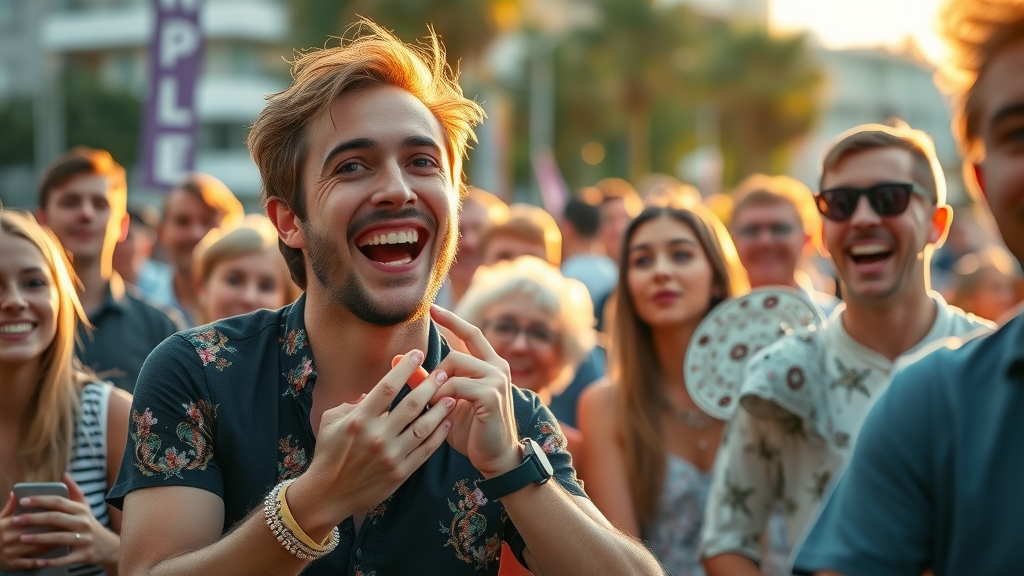Did you know that nearly three-quarters of paid social campaigns miss their targets ? If you’re pouring budget into paid ads but not seeing a return, you’re not alone. In the noisy world of digital marketing, understanding why campaigns fail—and more importantly, how to fix them—is the key to unlocking real business results. Let’s pull back the curtain on the paid media mistakes no one talks about and reveal what it takes to consistently stay ahead in social media marketing.
A Surprising Truth: Why 74% of Paid Social Campaigns Miss Their Targets
Despite the billions spent by brands on paid social campaigns each year, an eye-opening 74% of these campaigns fail to deliver the expected results. The problem isn’t always the social media platforms themselves, but rather common pitfalls in strategy, execution, and adaptability . Too many marketers are still relying on outdated tactics, poorly defined goals, or generic ad creative that blends into the sea of content at scale. The modern audience is savvy—your paid media strategies must be as dynamic as the users you want to reach.
*Why do so many miss the mark?* Weak audience targeting, lack of clear campaign objectives, and failure to react to media updates all play their part. Even the most advanced platforms like Facebook Ads or Google Ads can’t save a campaign built on shaky foundations. That’s why understanding—and avoiding—these traps is step one to real, measurable success in your digital marketing.

The Hidden Pitfalls Social Media Marketers Overlook
Many marketers assume that a bigger ad spend automatically translates to better performance. In reality, misallocation of budgets and failure to align ads with the customer journey can sabotage your ROI. Ignore the details—like campaign management or audience segmentation—and you’ll watch your metrics flat-line. Even the sharpest creative teams can’t deliver results if campaigns lack a data-driven approach and smart use of marketing news to inform optimizations.
Another overlooked danger is “ad fatigue”—showing the same individual ad too many times, resulting in declining engagement. Daily media updates mean yesterday’s best practice could be tomorrow’s failure. The way to combat this? Regular, granular reviews of real time data and an openness to shifting tactics fast, leveraging opportunity score metrics to highlight weak spots before they wreck your results.
Finally, creative that fails to resonate remains a widespread stumbling block. Today’s content creation must be both platform-specific and tailored for your unique audiences. With social media algorithms rewarding fresh, relevant content, it’s a costly mistake not to leverage influencer partnerships, video editing upgrades, and evolving creative formats within your campaigns.
Critical First Steps: How Paid Media Strategy Determines Your Success
Every truly successful paid social campaign starts with two essentials: crystal-clear objectives and a robust, responsive paid media strategy. Before diving into ad tools or funnel tactics, define what success looks like for your brand. Is it lower cost-per-acquisition (CPA), a higher conversion rate, or boosting ROAS? Setting these benchmarks keeps your digital marketing efforts laser-focused.
Next, tackle your paid media planning by mapping the customer journey and identifying high-intent touchpoints for conversion. Smart campaign creation integrates both Google Ads and Microsoft Advertising to “meet users where they are.” Advanced targeting, A/B testing, and regular reviews using opportunity score ensure your media marketing stays current with marketing news and delivers ROI—all while cutting wasted ad spend.
Paid Social Campaigns: Top Challenges and the Latest Digital Marketing News
The paid social media landscape is in flux. With algorithm shifts, rising costs, and stricter privacy policies, marketers face new roadblocks almost monthly. Keeping up with media updates and digital marketing news is no longer optional—it’s essential if you want to stay relevant and competitive in paid social campaigns. But it’s just as vital to know which updates matter and how to adapt them for your ad campaigns without getting lost in the noise.
Rising competition and audience expectations mean brands can’t simply “set and forget.” The most successful paid media marketers are constantly refining their campaign management processes. This includes embracing AI tool innovations and integrating insights from the flood of fresh marketing news. Let’s explore the biggest challenges and the fast-evolving tools that let you react in real time to keep campaign performance high.

How Media Updates Shape Paid Social Campaigns in a Rapidly Evolving Landscape
New features, platform policies, and emerging trends can force brands to pivot their entire paid media approach overnight. For example, shifts in Facebook’s targeting options or TikTok’s algorithm can dramatically impact reach and effectiveness. If you’re not plugged into the latest ppc news and marketing news, your paid social campaigns can quickly become irrelevant.
Media updates can actually be an opportunity, particularly for agile brands who are prepared to test creative formats, experiment with influencer partnerships, or quickly launch new landing pages. Being first to adapt often means you gain a performance edge—before competitors even notice what’s changed in the social media space.
The key is building a digital marketing and content creation workflow that incorporates regular news monitoring, risk assessment, and fast execution. By treating media updates as an integrated part of campaign management, you ensure your ad tools and creative teams work together to drive consistent paid social results.
Reacting to the Latest Paid Media and PPC News
Successful paid social campaigns aren’t set in stone—they’re living systems that constantly evolve in response to the latest PPC news. Whether it’s new ad formats in Google Ads or data privacy changes shaking up attribution models, the ability to quickly decode and act on marketing news is a critical differentiator.
Real-time campaign management makes all the difference. Proactive brands use media updates to refine targeting, test new creative and enhance ROI faster than competitors stuck in autopilot. They leverage advanced ad tools, AI tools, and real-time dashboards to transform challenges into immediate wins.
Staying updated is more than just a best practice—it’s how marketers ensure their content marketing and paid media efforts continue delivering value and hitting KPIs, even as the rules of social media change overnight.
Why Social Media Isn’t the Problem—Your Paid Social Campaigns Might Be
It’s tempting to blame poor results on platform algorithms or audience fatigue, but the truth is that underperforming ad campaigns usually reveal deeper strategic issues. With the explosion of paid media options, brands fall into the trap of chasing the next shiny object—instead of fixing weak messaging, unclear objectives, or outmoded campaign creation tactics.
The social media environment offers unprecedented reach and advanced targeting, but these benefits are wasted if you neglect strategy and measurement. Smart brands use opportunity score, data-driven insights, and a culture of continuous learning to consistently improve. If your paid social campaigns aren’t performing, look within before blaming the platform.
Building Paid Social Campaigns That Stand Out in Social Media
In a saturated marketplace, building standout paid social campaigns requires more than just a clever headline. You need to blend creative innovation with ruthless optimization — all while keeping up with content at scale and the ever-present drumbeat of media updates. Only by fusing data with creativity do campaigns break through the static and drive meaningful action.

Leveraging Google Ads and Microsoft Advertising in Paid Social Campaigns
Most brands rely on one platform, but high-performing paid social campaigns combine the strengths of multiple channels—Google Ads and Microsoft Advertising, for example—to maximize reach and differentiation. Each platform offers unique targeting, creative formats, and audience segmentation that can be dialed in to supercharge results.
Integrating both platforms within a unified digital marketing strategy amplifies performance while reducing risk. You can A/B test creative across platforms, capture diverse audience segments, and maintain brand consistency across the customer journey. The result? More robust analytics, higher opportunity score, and paid media results that consistently outperform single-channel campaigns.
Integrating AI Tools to Boost Your Paid Social Campaigns
The rise of AI tools like machine learning optimization, automated bidding, and real-time ad personalization has redefined paid media. These tools can quickly parse vast amounts of campaign data, automatically optimizing creative, spend, and audience segments in ways humans simply can’t at scale.
Brands that invest in AI tool adoption—especially those with a strong creative team—see higher conversion rates, better ROAS, and faster insights from their paid social campaigns. Still, AI is most effective when partnered with data-savvy marketers and agile campaign management—creativity and human judgment remain essential for campaign creation, storytelling, and messaging.
How Opportunity Score Can Uncover Weaknesses in Your Ad Campaigns
Opportunity score is a powerful metric that quantifies how well your campaign is performing versus its full potential. By highlighting gaps in targeting, creative, and budget allocation, it provides a blueprint for quick wins and longer-term optimization. Leading paid media marketers use opportunity scores to prioritize next steps and troubleshoot underperforming campaigns in real time.
Regularly reviewing your opportunity score—especially after major media updates or marketing news shifts—means you’re always working on what matters most. Over time, this approach compounds your results, ensuring every ad dollar works harder and every campaign report offers actionable, data-driven insight.
The Author’s Perspective: What Most Agencies Get Wrong with Paid Media
Most agencies jump on the latest marketing news, launching “trendy” campaigns that overlook the fundamentals. I’ve seen countless dollars wasted on paid ads simply because teams chase new features instead of pursuing a clear, data-driven strategy. With social media and digital marketing evolving at breakneck speed, the temptation to “be first” can easily sideline smart, sustainable results.

The Trap of Chasing Marketing News Instead of Data-Driven Decisions
It’s easy to be seduced by hot-off-the-press ppc news or marketing news headline. But the reality? Most of what’s trending won’t move the needle for your paid social campaigns. Effective campaign management relies on understanding which media updates and platform changes actually impact your performance—and focusing energy there.
I advise clients to invest more time in data review, creative iteration, and rigorous campaign creation rather than reacting to every new announcement. This keeps you from wasting time on low-impact initiatives, letting you spend your budget and efforts on what reliably delivers growth.
Opinion: The Need for Smarter Digital Marketing in Paid Social Campaigns
The path forward isn’t bigger budgets or trend-chasing. It’s making every paid media decision smarter, more accountable, and ruthlessly informed by data. We need to elevate the level of digital marketing and creative execution , using tools like opportunity score and AI upgrade features — but never at the expense of strategic focus and transparent goals.
“Ad spend is wasted not because of the channel, but because of blind spots in strategy.”
The industry must move beyond quick wins to building sustainable processes for success—constantly optimizing, learning, and refining your approach to campaign management. This is what separates the mediocre from those who consistently stay ahead in paid social campaigns.
What Sets Effective Paid Social Campaigns Apart?
The secret to effective paid social campaigns lies in perfecting fundamentals while keeping an eye on innovation. While every business and audience is unique, the essential elements of a high-performing campaign rarely change—what matters is the commitment to consistency, testing, and continuous learning from every campaign report and opportunity score.
-
Essential Elements of High-Performing Paid Social Campaigns:
- Clear objectives
- Advanced targeting
- Compelling creative
- Real-time optimization
- Data-driven measurement
Stay Ahead: Innovate Your Paid Social Campaigns with Fresh Digital Marketing Insights
To stay ahead, you must continually infuse your paid social campaigns with fresh insights, creative formats, and the latest updates in digital marketing news. This proactive approach ensures you’re not just following trends, but actively shaping them. Dedicate time each quarter to audit your ad campaigns, test at least one new AI tool, and refine your landing page or messaging to reflect current platform norms and user behaviors.
Staying ahead isn’t about overhauling everything at once. Look for ways to layer innovation—experiment with video ad storytelling, tap into micro-influencer partnerships, or pilot a new content creation approach. These iterative upgrades help your brand adapt nimbly to market shifts without losing sight of your core paid media objectives.
| Campaign Type | Avg. CTR | CPA | ROAS |
|---|---|---|---|
| Basic Campaign | 0.8% | $65 | 1.7x |
| Optimized Campaign | 2.3% | $29 | 4.1x |
How to Rethink Paid Social Campaigns for Real Results
Rethinking your approach to paid social is about going beyond generic content or basic ad tools. Instead, it means developing a holistic, values-driven campaign that combines sharp storytelling, next-level analytics, and a willingness to act on media updates in real time. Rather than separate silos, combine your creative, analytics, and performance marketing teams into one agile unit—an approach proven to outperform the competition.
The brands leading the way in paid media have mastered the art of rapid testing, fast feedback loops, and relentless focus on customer outcomes. They use opportunity score to measure what matters, pivot quickly based on results, and maintain alignment with their audience’s evolving expectations. The next step? Build an environment where human creativity and AI-powered precision work hand-in-hand.
Brand Storytelling: Humanizing Social Media and Paid Media Campaigns
Gone are the days when a clever slogan was enough. Today, effective paid social campaigns build an emotional bridge with their audience by weaving brand storytelling into content at scale. Real stories cut through algorithmic clutter and transform paid ads into experiences users want to engage with.

Bring your customer journey to life with authentic creative, influencer partnerships, and interactive experiences. Video ad content and behind-the-scenes features work especially well for building trust and encouraging sharing—two vital ingredients in digital marketing that drives results.
When you focus on humanizing your paid media, your campaigns gain relevance and memorability, unlocking stronger engagement and conversion rates across every social media channel.
Using Opportunity Score to Predict Paid Social Campaigns Success
Your opportunity score is an actionable metric that quickly tells you where you’re winning—and where you need to pivot. By regularly assessing your ad campaigns using opportunity scoring, you can allocate budget, prioritize optimizations, and test hypotheses at a rapid pace.
This predictive approach is particularly effective after updates for July or any platform shift that changes the social media marketing landscape. Use your opportunity score data to evolve creative, audience segments, and bid strategies—unlocking efficient, scalable growth.
“You cannot cut through the noise without a distinct message and relentless focus on the customer.”
When to Change Tactics: Pivot Points in Paid Social Campaigns
Knowing when to pivot is vital for campaign success. If your real time analytics signal declining CTR, rising CPA, or dropping ROAS, don’t wait—act. Proactive digital marketing teams train themselves to recognize pivot points and aren’t afraid to double down on what works or pull back fast from underperforming ad tools and creative.
Pivoting isn’t failure—it’s the foundation of optimized paid social campaigns. Rapid iterations, testing new formats, and rotating audiences keeps your paid media dynamic, adaptable, and ahead of the curve. This agility is what separates winning social media marketing from the rest.
Fail Fast, Fix Fast: How Real-Time Data Transforms Campaign Outcomes
The mantra of modern paid social campaigns is simple: fail fast, fix fast . Brands that make the most of real time analytics and quick-response creative teams can turn campaign weaknesses into strengths—often in a matter of days or weeks rather than months.

Regular check-ins, automated dashboards, and AI-powered optimization ensure your digital marketing stays current and competitive. This approach enables continuous learning and smarter risk-taking—key ingredients for staying ahead in today’s marketing news cycle.
Case Study: From Underperforming Paid Media to Award-Winning Campaigns
Consider the story of a retail brand that struggled for months with rising costs and an average ROAS of just 1.7x. After embracing opportunity scoring, testing new creative guided by AI tools, and revisiting their audience targeting, they pivoted quickly—ultimately doubling their CTR and reducing their CPA by over 50%. Within one quarter, what was once an underperforming ad campaign became an industry-award-winning example of agile paid media strategy.
The lesson? Effective social media and campaign management isn’t about avoiding mistakes—it’s about learning, adapting, and turning media updates to your advantage with a clear, data-driven approach.
Harnessing the Power of AI Tools for Paid Social Campaigns
In 2024, the most competitive paid social campaigns rely heavily on top-tier AI tools. From automated bidding and dynamic creative optimization to advanced audience modeling, these tools supercharge your ability to produce content at scale and thrive amid constant platform changes. The real advantage is blending AI upgrade features with an experienced creative team—one that can translate insights into captivating storytelling and effective micro-optimizations.

Where AI Tools Shine—and Where Human Insight Still Matters
AI tools excel at crunching massive datasets, forecasting trends, and automating repetitive tasks in campaign management. They identify which ads and targeting strategies are performing best—often suggesting optimizations that manual campaign creation would miss with limited resources or time.
Still, the best paid media is never “set-and-forget.” Human creativity, intuition, and an in-depth understanding of the brand voice are irreplaceable for content creation. The most advanced AI tool cannot replicate the emotional intelligence or strategic storytelling that brings a high-impact campaign to life. Use AI as a force multiplier—not as a replacement for a strong creative team.
Top AI Tools for Optimizing Paid Social Campaigns in Today’s Market
Today’s digital marketing landscape offers a range of AI tools for every stage of the paid social campaign journey:
- AdEspresso: Streamlines A/B testing and creative rotation for Facebook and Instagram Ads.
- WordStream Smart Ads: Automates performance tracking across Google Ads, Microsoft Advertising, and social media channels.
- Pattern89: Predicts creative success with AI-driven modeling, taking the guesswork out of ad copy and visual selection.
- Sprinklr: Integrates AI with multi-platform campaign management, ensuring real time optimizations across paid media.
A dynamic explainer video breaks down the step-by-step process of planning, creating, targeting, optimizing, and reporting on a high-performance paid social campaign. See how experts leverage creative workflow, analytics, and real-time optimizations to turn strategy into results.
People Also Ask about Paid Social Campaigns
What are paid social campaigns?
Paid social campaigns refer to any marketing effort on social media platforms that involves payment to boost content, reach targeted audiences, or achieve specific goals through promoted posts or advertisements.
How do you measure the success of paid social campaigns?
Success is typically measured using metrics like click-through rate (CTR), conversion rate, cost-per-acquisition (CPA), and return on ad spend (ROAS), alongside deeper indicators like brand engagement and lift.
What’s the best social media platform for paid campaigns?
The best platform depends on your audience. Facebook and Instagram lead for broad targeting, while LinkedIn excels for B2B and Twitter for real-time engagement. TikTok is emerging for younger audiences.
How much should you invest in paid social campaigns?
Investments vary. Start with a modest test budget, optimize for ROI, then scale. Most brands see results when allocating 10–25% of their digital marketing budget to paid social campaigns.
Practical Action Steps to Fix Your Paid Social Campaigns Now
Want to turn your struggling campaigns into high-performers? Start with these immediate, actionable steps that thousands of top brands rely on to give their paid social efforts a boost:
-
Immediate Steps to Rescue Your Paid Social Campaigns:
- Audit current performance
- Test new creative formats
- Tighter audience segmentation
- Automate reporting via AI tools
- Review and set clear KPIs
Frequently Asked Questions about Paid Social Campaigns
How can I reduce the cost of my paid social campaigns?
To lower costs, focus on advanced targeting, regularly refresh creative, and use AI tools to optimize bidding. Consistently review your opportunity score to pinpoint wasted spend and double down on what works. Testing smaller audiences and rotating ad formats also keeps your campaigns efficient.
How do I avoid ad fatigue in paid social campaigns?
Prevent ad fatigue by frequently updating your creative, testing new formats, and leveraging automation to manage frequency caps. Engage your creative team to produce a content calendar with variety, and monitor metrics in real time to swap out underperforming assets before they drag down results.
Which AI tools integrate with paid social campaigns best?
Leading AI tools for integration include AdEspresso, WordStream, Pattern89, and Sprinklr. Each offers solutions for automated optimization, creative testing, and unified dashboard reporting across main platforms like Google Ads, Microsoft Advertising, and all major social media channels.
Watch this step-by-step guide to see exactly how leading marketers optimize and scale paid social campaigns—from audit and planning to advanced analytics and final performance review.
Key Takeaways for Paid Social Campaigns
-
Key Lessons:
- Be data-driven
- Prioritize audience and creative
- Use AI tools wisely
- Stay current with marketing news
- Monitor, pivot, succeed
Ready for Paid Social Campaigns That Deliver?
Contact Our Paid Social Campaigns Experts Today: Call us at (385) 469-1869 or email at info@solu4u.com to transform your results.
Conclusion: Take immediate action: Audit your paid social campaigns, prioritize data, embrace innovation, and reach out for expert guidance to achieve next-level results.
Sources
- https://sproutsocial.com/insights/paid-social/
- https://www.searchenginejournal.com/paid-social-campaigns/
- https://www.wordstream.com/paid-social
- https://www.hubspot.com/marketing-statistics
- https://www.wordstream.com/blog/ws/2017/02/07/facebook-ad-fatigue
- https://www.adroll.com/blog/marketing/paid-social-advertising-guide
To enhance your understanding of effective paid social campaigns, consider exploring the following resources:
-
“Paid Social Media Advertising: A Beginner’s Guide” ( semrush.com )
-
“7 Benefits of Paid Social Media Advertising” ( powerdigitalmarketing.com )
These articles provide valuable insights into the benefits and strategies of paid social media advertising, offering practical tips to improve your campaign performance.
 Add Row
Add Row  Add
Add 




Write A Comment